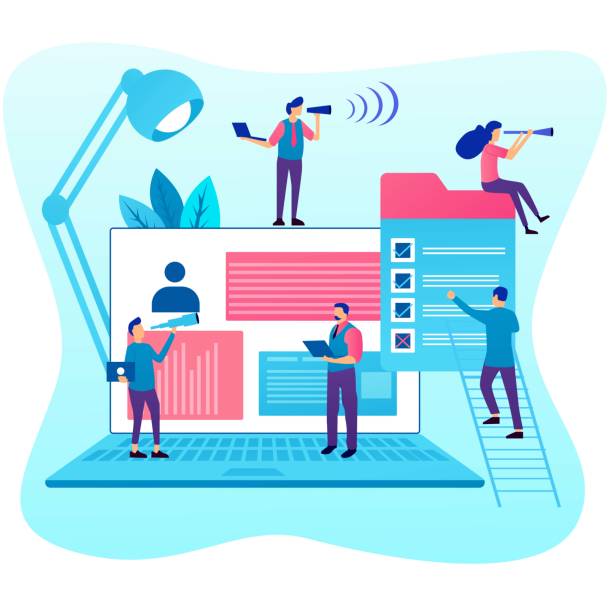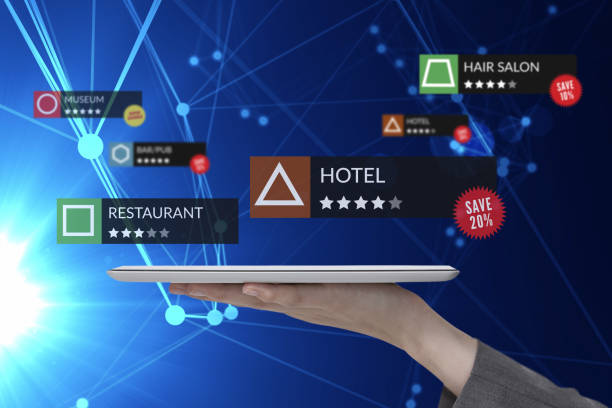Introduction and Necessity of Multilingual Website Design in the Global Age

In today’s world, where geographical boundaries have no meaning in cyberspace, #business_expansion and #reaching_global_audiences have become more important than ever.
One of the most powerful tools to achieve this goal is multilingual website design.
This approach allows your website to present its content in different languages, thereby reaching a wider range of users worldwide.
Imagine a user from Germany or Japan visiting your website and being able to read the information they need in their native language; this excellent user experience increases their trust and loyalty to your business.
This article is a comprehensive and educational guide for anyone looking to implement an international website.
The main advantages of this strategy include increased visibility in search engines (SEO), improved user experience, and ultimately, growth in sales and brand reputation.
Ignoring this necessity in today’s competitive market means losing countless opportunities.
In this guide, we will explore the various aspects of this process in a descriptive and detailed manner, so you can confidently embark on this journey.
Is your e-commerce site ready to attract maximum customers and increase sales? Rasawweb transforms your online business with modern and efficient e-commerce website design.
✅ Increased speed and SEO improvement
✅ Excellent user experience on mobile and desktop⚡ Get a free e-commerce website design consultation from Rasawweb!
Challenges and Initial Considerations in Creating International Platforms
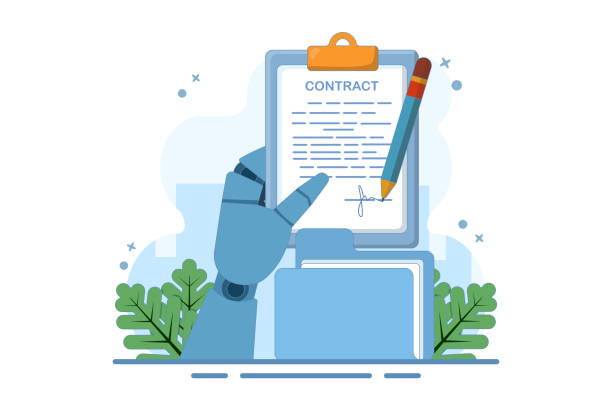
Before starting multilingual website design, it is essential to be aware of the initial challenges and considerations.
One of the most important aspects is the URL structure.
Should you use subfolders (e.g., yoursite.com/es), subdomains (es.yoursite.com), or country code top-level domains (ccTLDs) (e.g., yoursite.es)? Each option has its advantages and disadvantages in terms of SEO and management.
Google recommends using subfolders for many businesses, but the final choice depends on your overall strategy.
Furthermore, the issue of Hreflang tags arises, which inform search engines about which specific version of a page is for which language and geographical region.
Incorrect implementation of these tags can lead to serious SEO problems.
Another specialized consideration is choosing a Content Management System (CMS) that fully supports multilingual functionality.
Does your CMS allow for easy translation of content, images, menus, and even meta-data? This is a key question whose answer affects the overall process of your multilingual website development.
Understanding these challenges from the outset will help you plan more accurately and avoid costly mistakes.
Choosing a Translation and Implementation Strategy for Multilingual Projects

Choosing a translation strategy is the cornerstone of success in multilingual website design.
There are various methods for content translation, each with its own advantages and disadvantages.
Human translation, with high accuracy and the ability to understand cultural nuances and localization, offers the best quality but is more expensive and time-consuming.
This method is ideal for sensitive, legal, or marketing content that requires precise tone and messaging.
In contrast, machine translation (like Google Translate) is cheaper and faster, but usually lacks the necessary accuracy and cultural subtleties and may harm brand reputation.
It can be useful for non-sensitive content or a large volume of non-essential data.
Sometimes, a combination of both approaches, known as Post-Edited Machine Translation (PEMT), can be an optimal solution.
In this method, the text is first translated by machine and then reviewed and corrected by a human translator.
Also, using Translation Management Systems (TMS) can facilitate the process and improve coordination between translators and developers.
Finally, CMS support for multilingual capabilities is crucial.
Platforms like WordPress with plugins such as WPML or Polylang, or Drupal, which natively supports multilingualism, are good options.
The table below helps you choose the most suitable method.
| Translation Method | Advantages | Disadvantages | Use Cases |
|---|---|---|---|
| Human Translation | High accuracy, complete localization, preservation of tone and message | High cost, time-consuming | Marketing, legal, sensitive, literary content |
| Machine Translation | High speed, low cost, large volume | Low accuracy, lack of cultural nuance understanding, needs editing | Internal content, general information, chatbots |
| Post-Edited Machine Translation (PEMT) | Combination of speed and quality, cost-effective | Requires expert editor, still has limitations | Medium-volume content, news, technical documents |
SEO Optimization for Multilingual and International Websites

Search Engine Optimization (SEO) for multilingual websites requires a specialized and precise approach that goes beyond simple word translation.
One of the most important aspects is the correct use of the Hreflang tag.
This tag helps search engines like Google display the appropriate language version of a page to users in different geographical regions.
Incorrect use of Hreflang can lead to problems such as duplicate content and ranking drops.
Also, conducting keyword research for each language and geographical region separately is crucial.
Keywords that are popular in one language or culture may have a different meaning or not be used at all in another.
Content strategy must also be localized to suit each language and target market.
This includes creating new content for specific audiences, or modifying existing content to match local culture.
International SEO also pays special attention to internal and external link building in each language.
Link structure should be logical and help users and search engines easily navigate between languages.
Furthermore, site loading speed, mobile compatibility, and the use of CDN (Content Delivery Network) to improve user experience in different parts of the world are other factors affecting the SEO of multilingual website design.
Precise data analysis and monitoring of website performance in each language allow you to continuously improve your strategy.
Are you tired of your e-commerce site having visitors but no sales? Rasawweb solves your main problem with professional e-commerce website design!
✅ Significant sales increase with targeted design
✅ Flawless user experience for your customers
⚡ Get a free consultation now!
User Experience (UX) and User Interface (UI) Design in Multilingual Websites

Multilingual website design is not just about translating text; it involves providing a unique user experience for audiences in every language and culture.
User Interface (UI) and User Experience (UX) play a vital role in the success of an international website.
One of the first points to consider is the location and clarity of language-switching options.
This option should be easily accessible, usually placed in the header or footer of the website, and identified with clear visual cues like flags or language names.
However, using flags is not always recommended, as one country might have multiple languages or one language might be spoken in multiple countries.
Another point is text direction (RTL/LTR).
Languages like Persian and Arabic are written from right-to-left (RTL), while English and most European languages are left-to-right (LTR).
The design must accommodate this change in direction without issues in layout and element arrangement.
Choosing an appropriate font that supports characters from all target languages and has high readability is also very important.
Images and icons must also be carefully selected so as not to be culturally inappropriate or offensive.
An engaging yet functional design can significantly impact user retention on the site and make your global platform development successful.
Paying attention to these details improves the user experience and gives visitors the feeling that your website was designed for them.
Content Maintenance and Updates in Multilingual Systems
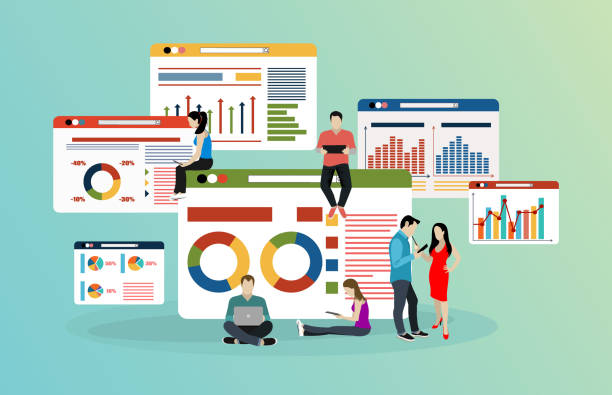
After multilingual website design and launch, the work doesn’t end.
Continuous content maintenance and updates are of paramount importance.
Your content changes and grows over time; this includes new articles, product updates, or news announcements.
Any new section or change in the main content must be immediately translated and published in all other languages to prevent information inconsistency.
Inconsistency can harm the user experience and even lead to confusion for international audiences.
Using a Content Management System (CMS) with strong translation capabilities facilitates the process.
These systems allow you to easily manage translated content, track translation statuses, and ensure no part is missed.
Also, establishing a clear workflow for the translation and content team is very beneficial.
This workflow should include steps for content creation, submission for translation, review, and publishing.
Regular review of translation quality and ensuring their accuracy and fluency helps maintain your website’s credibility.
A successful global website is one that always keeps its content updated and consistent.
This is a continuous process that requires commitment and meticulous planning.
Tools and Platforms for Implementing Multilingual Websites
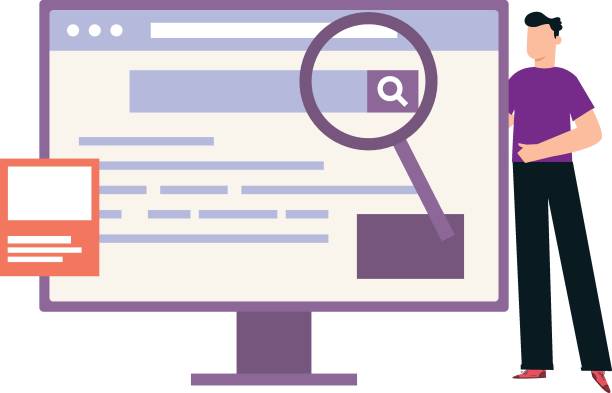
To facilitate the multilingual website design and management process, various tools and platforms are available to assist you.
These tools range from content management systems to translation plugins and specialized services.
When choosing a CMS, attention should be paid to its native support for multilingualism or the availability of powerful plugins.
For example, WordPress, with popular plugins like WPML and Polylang, easily provides the ability to create and manage multilingual content.
WPML allows you to translate every aspect of your site, including pages, posts, custom post types, taxonomies, menus, and even theme texts.
Other platforms like Drupal have strong native multilingual capabilities suitable for larger and more complex projects.
Also, Translation Management Tools (TMS) like Smartling or Phrase (formerly PhraseApp) can make the translation process much more efficient for large teams or translation agencies.
These tools provide the ability to manage Translation Memory and glossaries, which helps maintain consistency and reduce translation costs.
For multilingual website testing and Quality Assurance (QA), there are tools that can identify broken links, Hreflang issues, and display errors in different languages.
Choosing the right tools can significantly impact the speed, quality, and cost of your multilingual platform development.
In the table below, some popular tools and their applications are listed.
| Tool Type | Examples | Application |
|---|---|---|
| CMS Plugins (WordPress) | WPML, Polylang, TranslatePress | Content translation, language management, multilingual SEO |
| Translation Management Systems (TMS) | Smartling, Phrase, MemoQ, Trados | Managing large translation projects, translation memory, glossaries |
| Automatic Translation Services | Google Cloud Translation, DeepL API | Instant translation, use for non-sensitive or internal content |
| SEO and QA Review Tools | Screaming Frog (for Hreflang), Ahrefs, SEMrush | Checking broken links, Hreflang errors, international SEO status |
Legal and Privacy Aspects in International Websites
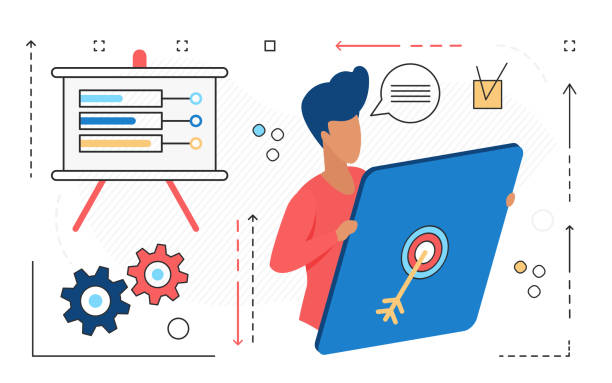
Multilingual website design not only includes technical and content aspects but also encompasses legal and privacy dimensions, which gain additional importance, especially at an international level.
Data protection laws such as GDPR (General Data Protection Regulation) in the European Union, CCPA (California Consumer Privacy Act) in the United States, and similar laws in other countries, must be strictly observed.
This means translating and localizing all privacy policies, terms and conditions, and cookie policies into all languages your website supports.
Ignoring these specialized and legally questionable content aspects can lead to heavy fines and loss of user trust.
Additionally, in some countries, you may need to provide specific legal information in the website footer or contact pages (such as Impressum in Germany).
Consulting with a lawyer specializing in international law and data privacy is strongly recommended to ensure full compliance with local laws.
Ensuring that users in each geographical region have access to their privacy information in their native language is not only a legal requirement but also demonstrates your respect for users and builds trust.
This attention to detail distinguishes an international website from an ordinary one.
Are you tired of your e-commerce site having visitors but no sales? Rasawweb solves your main problem with professional e-commerce website design!
✅ Significant sales increase with targeted design
✅ Flawless user experience for your customers
⚡ Get a free consultation now!
Measuring Success and Data Analysis in Multilingual Projects

After multilingual website design and its launch, the next step is measuring success and data analysis.
This analytical and educational phase helps you understand your website’s performance in different languages and identify opportunities for improvement.
Tools like Google Analytics provide the ability to track traffic based on language, geographical location, and user behavior.
You can see which languages attract the most traffic, what the Bounce Rate is for each language, and what paths users follow on the site in each language.
Analyzing the Conversion Rate for each language shows you which languages have the highest ROI and which languages require more optimization.
Perhaps marketing content in a particular language needs to be changed, or the payment process is complicated for users in a specific geographical region.
Using A/B testing for localized content can also provide valuable insights.
This approach allows you to test different versions of a page in various languages and see which one performs better.
Finally, monitoring keyword rankings in each language and geographical location is crucial for evaluating the effectiveness of your SEO strategy in multilingual website design.
These data help you make more informed decisions for the growth and optimization of your website.
Conclusion and Next Steps for a Multilingual Website
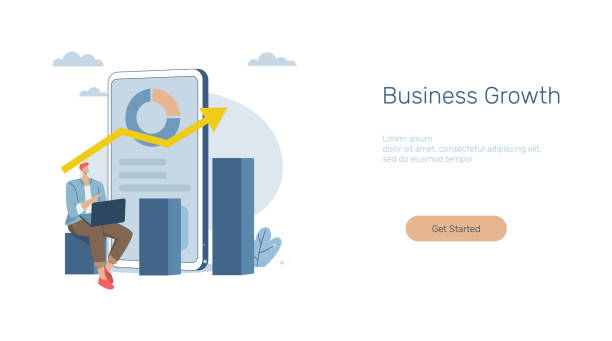
Multilingual website design is a strategic investment for any business looking to expand globally and reach international audiences.
Throughout this guide, we explored various aspects of this process, from initial importance and technical challenges to translation strategies, SEO optimization, user experience, maintenance, auxiliary tools, legal aspects, and data analysis.
Each of these steps plays a vital role in the success of an international website.
Remember that creating a multilingual platform is not a one-time project but a continuous process that requires constant attention and updates.
By correctly implementing the principles discussed, you can not only access new markets but also gain the trust and loyalty of your users worldwide.
Your next steps will include careful CMS selection, planning for translation and localization, focusing on international SEO, and continuously monitoring website performance.
By focusing on the needs of international users and utilizing best practices in multilingual website design, your business can achieve unprecedented growth and success in the global arena.
The future of the web is undoubtedly multilingual, and with this approach, you will be at the forefront of this transformation.
Frequently Asked Questions
| No. | Question | Answer |
|---|---|---|
| 1 | What is multilingual website design? | Multilingual website design means creating a website whose content is available to users in several different languages. This is usually done through a simple user interface for language switching. |
| 2 | Why should we design a multilingual website? | Multilingual website design helps you reach more audiences worldwide, provide a better user experience for international users, and improve your global SEO. |
| 3 | What are the main methods for implementing multilingualism on a website? | The main methods include using subdomains, subdirectories, or URL parameters for each language, as well as using completely separate domains for each language. |
| 4 | Is it better for SEO to use subfolders or subdomains? | From an SEO perspective, both subfolder and subdomain methods can be effective. However, many SEO experts prefer subfolders due to better transfer of main domain authority. |
| 5 | What are the important points in translating multilingual website content? | Translation should be done by native translators, content should be localized in addition to translation to match the target audience’s culture, and pure machine translation should be avoided. |
| 6 | What is the role of the hreflang tag in multilingual site SEO? | The hreflang tag helps search engines like Google display the correct language and regional version of a page to the appropriate users, which also prevents duplicate content issues. |
| 7 | Can a website be made multilingual without coding? | Yes, in Content Management Systems (CMS) like WordPress, powerful plugins like WPML or Polylang exist that allow multilingualizing a website without needing coding. |
| 8 | What are the challenges of multilingual website design? | Challenges include translation management, content localization, adhering to SEO principles for each language, technical support for different languages, and ensuring design consistency across different languages. |
| 9 | What is the difference between translation and localization? | Translation is merely rendering words from one language to another, whereas localization involves adapting content to the culture, customs, currency, date and time formats, and even appropriate colors for the target audience. |
| 10 | What is the best user experience (UX) for language switching? | A clear and accessible language switcher (usually in the header or footer), using language names instead of flags (due to regional diversity), and maintaining the user’s position after language change are important UX considerations. |
and other services of Rasawweb Advertising Agency in the field of advertising
Smart Link Building: An innovative platform to improve customer behavior analysis with precise audience targeting.
Smart Customer Journey Map: An innovative platform to improve campaign management with marketing automation.
Smart Digital Advertising: A combination of creativity and technology to attract customers through marketing automation.
Smart Content Strategy: A combination of creativity and technology to increase sales by using real data.
Smart Social Media: An innovative platform to improve sales increase with precise audience targeting.
And more than a hundred other services in the field of internet advertising, advertising consultation, and organizational solutions
Internet Advertising | Advertising Strategy | Advertorials
Resources
- Webramz: Multilingual Website Design Guide
- Pars Data: Multilingual Website Design
- AsanWeb: Advantages of Multilingual Sites
- Rayvarz: Multilingual Website Design Services
🚀 To reach the pinnacle of success in the digital world, Rasawweb Afarin is with you, offering professional responsive website design and digital marketing services.
📍 Tehran, Mirdamad Street, next to Bank Markazi, Southern Kazeroon Alley, Ramin Alley, No. 6

